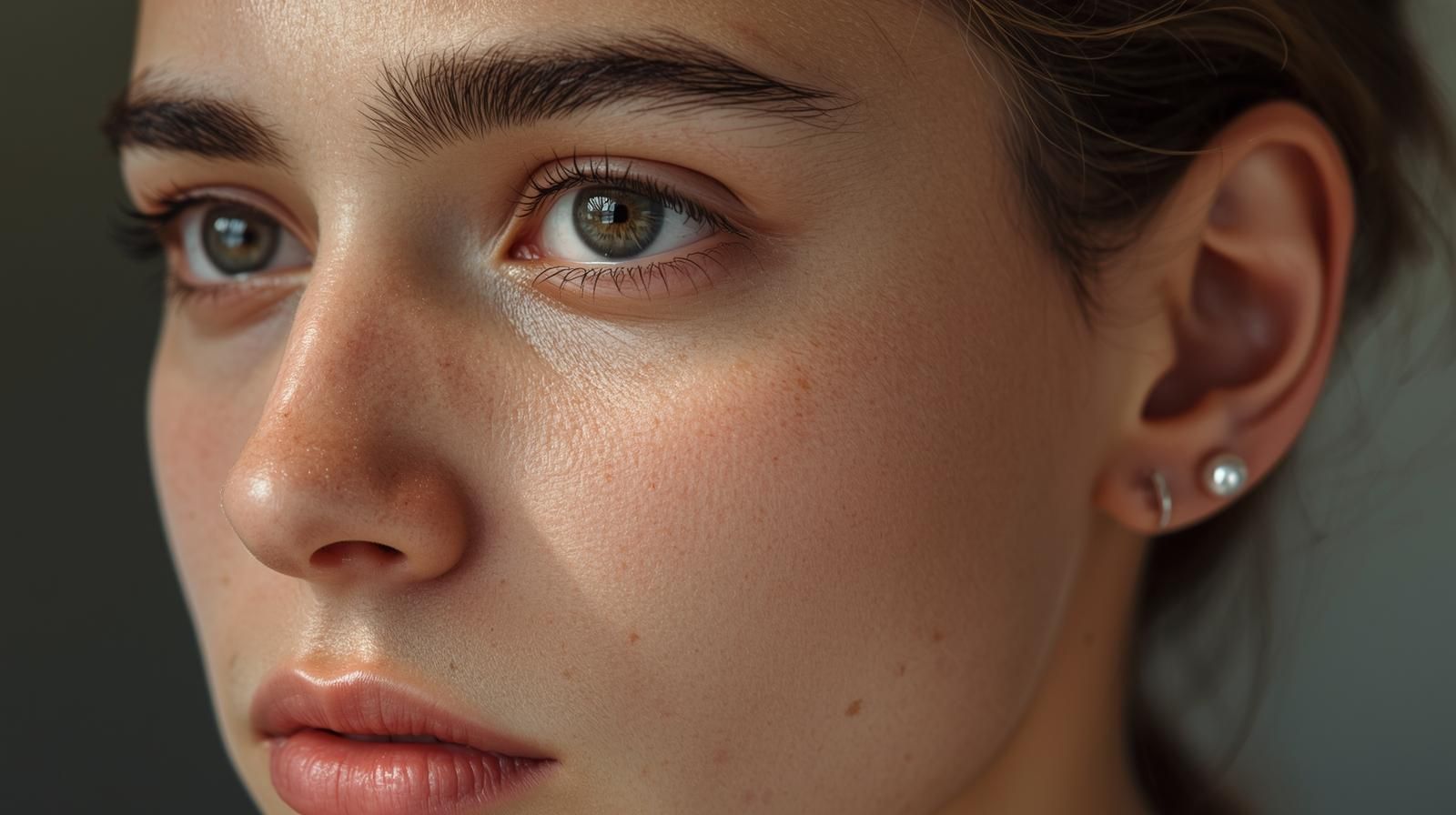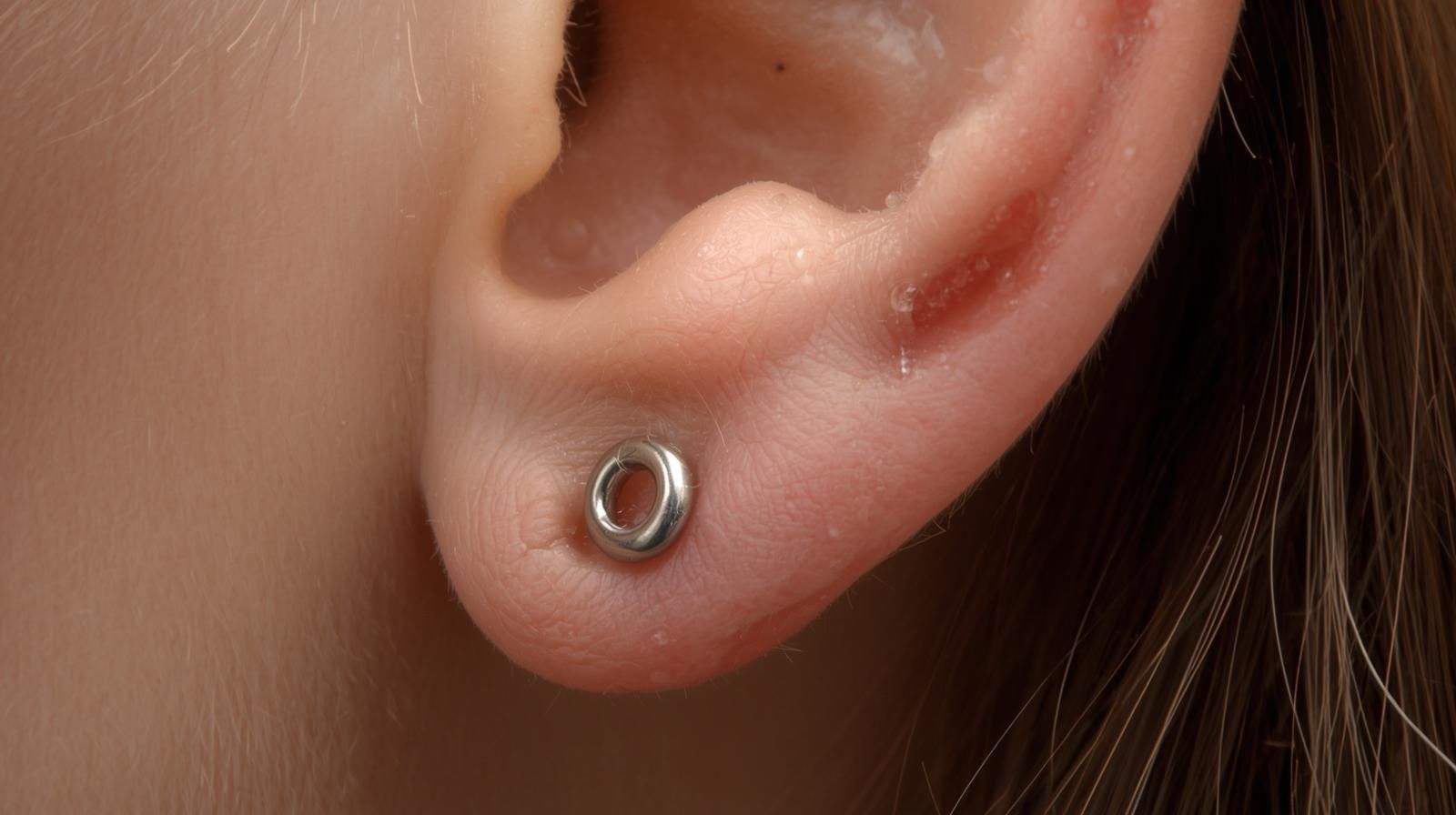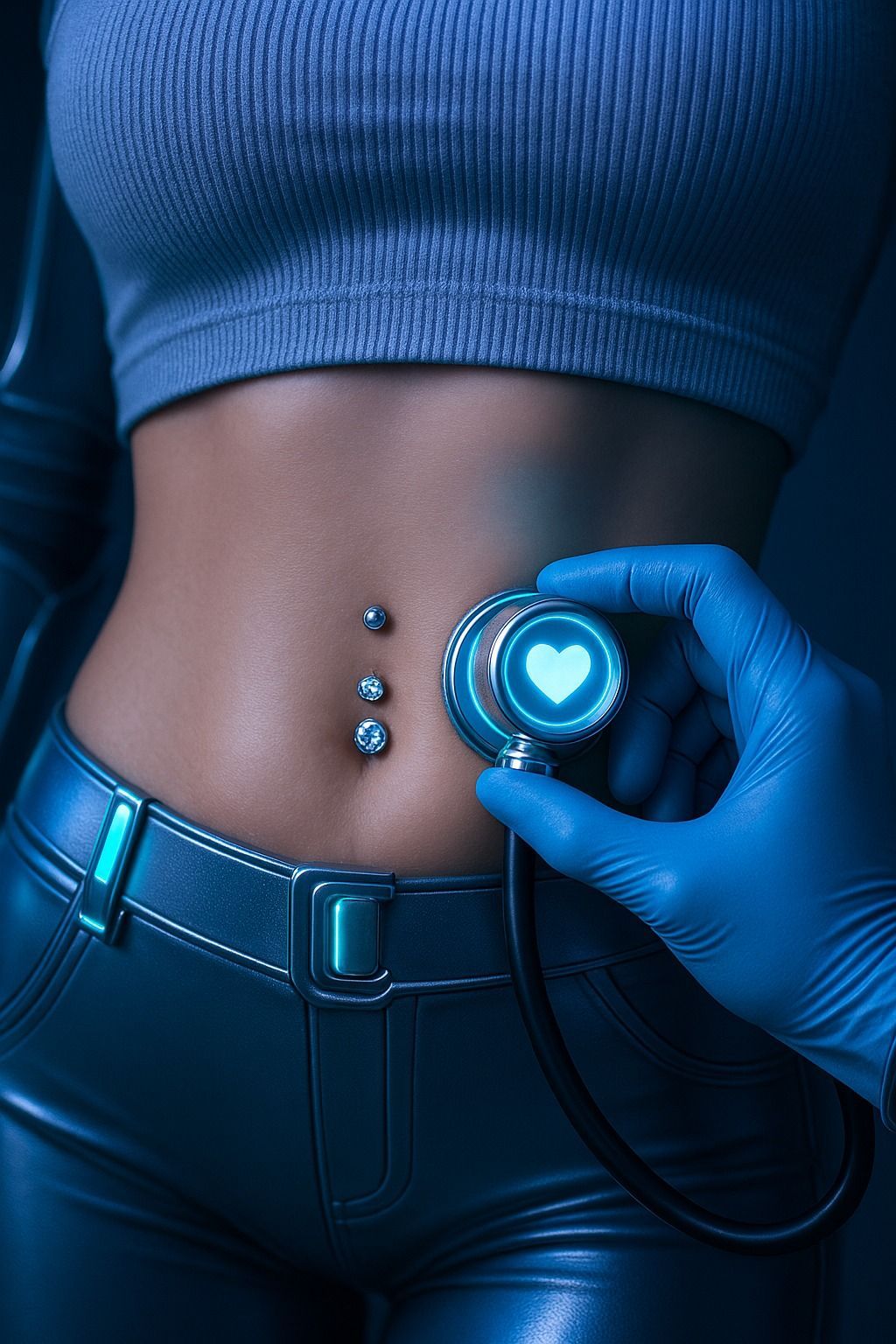The Most Painful Piercings: A Comprehensive Guide
Table of Contents
- Introduction
- Understanding Pain in Piercings
- Top Painful Piercings
- Genital Piercings
- Nipple Piercings
- Daith, Conch, and Rook Piercings
- Industrial Piercings
- Septum Piercings
- Moderately Painful Piercings
- Helix and Forward Helix
- Tragus Piercings
- Eyebrow Piercings
- Lip Piercings
- Tongue Piercings
- Least Painful Piercings
- Nostril Piercings
- Earlobe Piercings
- Navel Piercings
- Factors Affecting Pain Levels
- FAQ Section
- Actionable Checklists
- Relevant Statistics and Data
- Summary and Takeaways
Introduction
Piercings have been a form of self-expression for centuries, allowing individuals to adorn their bodies in unique and meaningful ways. From ancient tribes using piercings as rites of passage to contemporary fashion statements, the cultural significance of body piercings is vast and varied. However, one of the most common concerns when considering a new piercing is the level of pain involved. Pain is subjective and can vary greatly from person to person, but there are certain piercings that are generally considered more painful than others. This guide will provide you with a detailed overview of the most painful piercings, helping you make an informed decision about your next body modification.
Understanding Pain in Piercings
Pain is a complex experience influenced by various factors, including individual pain tolerance, the skill of the piercer, and the specific area of the body being pierced. Generally, areas with more nerve endings or thicker cartilage tend to be more painful to pierce. For instance, the ear cartilage is denser than the soft tissue of the lobe, making piercings in this area more uncomfortable. Additionally, the method of piercing can impact the level of discomfort experienced. Piercers use different techniques ranging from needles to piercing guns, with the former being more precise and often less painful. The psychological preparation of the client also plays a role; those who approach the process with calmness often report lower pain levels.
Several studies have demonstrated the influence of psychological factors on pain perception. For instance, a study published in the Journal of Pain Research highlights the importance of mental readiness and stress management in reducing perceived pain during procedures like piercings. The findings suggest that individuals who practice mindfulness or engage in relaxation exercises before a piercing often report a more tolerable experience.
Top Painful Piercings
Genital Piercings
Genital piercings are consistently ranked among the most painful due to the high concentration of nerve endings in these areas. Examples include the Prince Albert, Christina, and clitoral hood piercings. The intense sensitivity of the genital region contributes to a sharper, more pronounced pain during the procedure. In the case of the Prince Albert piercing, which passes through the urethra, the immediate pain is followed by a unique healing process that requires careful attention to hygiene to prevent infection. Despite the pain, many individuals choose these piercings for the enhanced sensitivity they can provide, as well as the unique aesthetic appeal.
The aftercare for genital piercings is crucial due to the susceptibility of the area to infection. It is recommended to wear loose-fitting clothing and use a saline solution to cleanse the area daily. Additionally, avoiding sexual activity for a period recommended by the piercer can help prevent irritation and promote healing. According to a survey by the Association of Professional Piercers, about 60% of individuals with genital piercings reported that the long-term benefits, such as increased sensitivity and personal satisfaction, outweighed the initial pain and healing challenges.
Nipple Piercings
Nipple piercings are known for causing sharp, intense pain. Both men and women report significant discomfort due to the concentration of nerves in the nipple area. The initial piercing is quick, but the sensation can be quite strong and linger for a short period afterwards. The healing process can also be challenging, often taking several months. Many individuals opt for nipple piercings to symbolise personal milestones or as a statement of individuality. Testimonials from those with nipple piercings often highlight the initial pain followed by a rewarding sense of empowerment and aesthetic satisfaction.
An important aspect of nipple piercing aftercare includes wearing breathable, non-restrictive clothing to avoid friction. Regular cleaning with a saline solution is essential to prevent infection. A study published in the Journal of Body Art and Modification found that 75% of people with nipple piercings experienced significant improvements in self-esteem and body image, indicating the psychological benefits that can accompany this form of body art.
Daith, Conch, and Rook Piercings
These inner ear cartilage piercings are known for their pain due to the thickness of the cartilage and the awkward placement. The daith, conch, and rook piercings involve penetrating dense cartilage, which can result in a more uncomfortable experience compared to softer tissue piercings. The daith piercing, in particular, has gained popularity for its purported benefits in alleviating migraines, although scientific evidence is limited. The conch piercing, named for its resemblance to a conch shell, offers a striking visual impact, often worn with bold jewellery. The rook piercing, located in the anti-helix of the ear, is praised for its subtlety and sophistication.
Research into the potential health benefits of daith piercings, especially in relation to migraine relief, has been inconclusive. However, anecdotal evidence from individuals who have undergone the procedure suggests a reduction in migraine frequency, making it an attractive option for those suffering from chronic headaches. Proper aftercare, including regular cleaning and avoiding pressure on the piercings, is essential to ensure successful healing.
Industrial Piercings
Industrial piercings involve two separate cartilage piercings connected by a single bar. The procedure is more painful due to the need to align and pierce two points in the cartilage simultaneously. The angle and double piercing contribute significantly to the discomfort experienced. Industrial piercings are popular for their edgy, rebellious look and are often customised with unique bars and charms. The healing process requires diligent care to prevent complications, as the connected piercings can be prone to irritation.
The process of caring for an industrial piercing involves twice-daily cleaning with saline solution and avoiding sleeping on the piercing for several weeks. A study by the International Journal of Dermatology reports that adherence to aftercare guidelines significantly reduces the likelihood of complications such as hypertrophic scarring or infection, which can result from improper care.
Septum Piercings
While septum piercings can be quite painful if not performed through the thin membrane just below the cartilage, when done correctly, they are less painful than anticipated. However, if the "sweet spot" is missed, the piercing can be notably uncomfortable. Septum piercings have seen a resurgence in popularity due to their versatility and cultural significance in various societies. They offer the advantage of being easily hidden if necessary, through the use of retainers, making them a discreet option for professional settings.
To ensure a successful septum piercing, it is crucial to choose an experienced piercer who understands the anatomy of the nose. Proper placement can mitigate pain and promote faster healing. An analysis in the Journal of Cultural Studies highlights the septum piercing's role in various cultural practices, underscoring its historical and contemporary relevance as a symbol of identity and rebellion.
Moderately Painful Piercings
Helix and Forward Helix
Located in the outer upper ear cartilage, helix and forward helix piercings are moderately painful. The initial piercing feels like a quick pinch, but the healing process can be uncomfortable due to the cartilage's rigidity. Helix piercings can be customised with a variety of jewellery, from simple hoops to elaborate cuffs. Forward helix piercings, positioned at the front of the ear, offer a unique aesthetic and can be combined with other piercings for a layered look. Despite the moderate pain, these piercings are popular for their versatility and stylish appeal.
The popularity of helix and forward helix piercings is partly due to their ability to accommodate multiple placements along the ear, providing a canvas for creative expression. Proper aftercare, involving gentle cleaning and avoiding sleeping on the side of the piercing, helps prevent irritation and speeds up healing.
Tragus Piercings
The tragus is a small, thick flap of cartilage at the entrance of the ear canal. Piercing it can feel more like pressure than sharp pain due to the cartilage's density, but it is still considered moderately painful. Tragus piercings are favoured for their subtlety and can be adorned with small studs or hoops. The healing process requires careful cleaning to prevent infection, as the location is susceptible to bacteria from headphones and other ear devices.
A key consideration for tragus piercings is the potential for interference with earbud use. Selecting jewellery that sits flush with the skin can minimise discomfort and prevent snagging. A study in the Journal of Audiology suggests that individuals with tragus piercings should be mindful of hygiene practices when using headphones to avoid complications.
Eyebrow Piercings
Eyebrow piercings are relatively straightforward. The pain is described more as pressure than sharp pain, although the area is sensitive due to facial nerves. Eyebrow piercings can be placed at various angles and are often chosen for their ability to enhance facial features. They are popular among individuals seeking a bold, expressive look. The healing process is generally uncomplicated, but care must be taken to avoid snagging the jewellery on clothing or hair.
Choosing jewellery that complements facial features and maintains a low profile can enhance the aesthetic appeal of eyebrow piercings. Regular cleaning with a saline solution helps prevent infection and promotes healing. A review in the Cosmetic Dermatology Journal notes that eyebrow piercings can significantly alter perceived facial symmetry, making placement and jewellery selection crucial for desired outcomes.
Lip Piercings
Lip piercings, such as labret, Monroe, and Medusa, involve piercing the lip area, which is soft on the inside but firmer on the outside. While the initial piercing may not be intensely painful, the subsequent swelling can cause discomfort. These piercings are often chosen for their striking appearance and ability to complement other facial piercings. The healing process involves avoiding certain foods and drinks to minimise irritation and promote healing.
To mitigate swelling and promote healing, individuals with lip piercings are advised to rinse their mouth with an alcohol-free mouthwash after meals. The Journal of Oral Health emphasises the importance of maintaining oral hygiene to prevent complications such as infection or gum irritation.
Tongue Piercings
Surprisingly, tongue piercings are less painful than expected for many individuals. The tongue is a muscle that heals quickly, and while the piercing itself is not overly painful, the swelling that occurs afterwards can be uncomfortable. Tongue piercings are popular for their discreet nature and the option to wear a variety of jewellery. The healing process requires maintaining oral hygiene and avoiding spicy or acidic foods to reduce irritation.
A significant advantage of tongue piercings is the rapid healing time, often within four to six weeks. A study in the Journal of Oral and Maxillofacial Surgery highlights the importance of avoiding smoking and consuming hot beverages immediately after the procedure to minimise swelling and promote healing.
Least Painful Piercings
Nostril Piercings
Nostril piercings involve a quick, sharp pinch with minimal discomfort for most people. The tissue in the nostril is relatively soft, allowing for a less painful experience. Nostril piercings are among the most culturally diverse, with significance in various societies around the world. They offer a wide range of jewellery options, from simple studs to elaborate hoops.
The cultural significance of nostril piercings varies, with historical roots in South Asian and Middle Eastern traditions. A comprehensive study in the Journal of Cultural Anthropology explores the symbolic meanings attached to nostril piercings, including marital status and spiritual beliefs.
Earlobe Piercings
Earlobe piercings are the most common and are generally considered the least painful. The procedure involves mild discomfort and heals quickly, making it an ideal choice for those new to piercings. Earlobe piercings are often the first type of piercing people receive and are highly customisable with a vast selection of jewellery styles.
The straightforward healing process for earlobe piercings makes them a popular choice for individuals of all ages. According to a survey by the National Piercing Association, earlobe piercings account for over 70% of all piercings performed, underscoring their enduring popularity.
Navel Piercings
Navel piercings, while not entirely painless, are generally not very painful and are popular for their aesthetic appeal. The healing process can be somewhat tricky, but the initial piercing is tolerable for most. Navel piercings are often chosen for their ability to accentuate the body's natural curves and are popular among those looking to add a touch of glamour to their appearance.
Proper aftercare for navel piercings is essential, as the area is prone to irritation from clothing. Using a saline solution to clean the area and avoiding tight-fitting garments can help prevent complications. A study in the Journal of Aesthetic Surgery emphasises the importance of following aftercare instructions to minimise the risk of infection or migration.
Factors Affecting Pain Levels
Several factors can influence the level of pain experienced during a piercing, including:
- Individual Pain Tolerance: Some people have a higher threshold for pain and may find piercings less uncomfortable.
- Nerve Density: Areas with a higher concentration of nerves, such as the genitals and nipples, tend to be more painful to pierce.
- Piercing Method: The tool and technique used can affect pain levels. Professional piercing needles are designed to minimise pain and promote faster healing.
- Piercer Skill: An experienced piercer can make the procedure quicker and less painful due to their precision and technique. Researching and selecting a reputable studio with skilled professionals is crucial for a positive experience.
A study in the Journal of Pain Management found that individuals who communicate openly with their piercer about their pain tolerance and concerns often experience less anxiety and discomfort. Establishing trust and understanding with your piercer can lead to a more positive overall experience.
FAQ Section
Q1: How can I reduce pain during a piercing?
To reduce pain, ensure you are well-rested and hydrated before your appointment. Eating a light meal can also help stabilise your blood sugar levels. Communicate with your piercer about any concerns you have, and they can guide you through the process. Some individuals find that focusing on their breathing or using relaxation techniques can help reduce anxiety and discomfort during the procedure.
Q2: Are there any aftercare tips to manage pain post-piercing?
Yes, follow the aftercare instructions provided by your piercer. This typically includes cleaning the piercing with a saline solution, avoiding touching the area with dirty hands, and refraining from swimming in pools or hot tubs during healing. It's important to maintain a consistent aftercare routine to prevent infection and promote healing. If you experience excessive pain or signs of infection, consult with your piercer or a healthcare professional.
Q3: How long does it take for a piercing to stop hurting?
Pain from a piercing usually subsides within a few days to a week, but the exact duration can vary depending on the location and individual healing rates. Some cartilage piercings may take longer to settle. Following proper aftercare and avoiding irritants can help minimise discomfort and speed up the healing process.
Actionable Checklists
Pre-Piercing Checklist
- Research the type of piercing you want and understand the pain level involved.
- Choose a reputable studio known for professionalism and hygiene.
- Ensure you are well-rested, hydrated, and have eaten a light meal before your appointment.
- Wear comfortable clothing that allows easy access to the area being pierced.
- Prepare any questions you have for your piercer about the procedure and aftercare.
Post-Piercing Aftercare Checklist
- Clean the piercing with a saline solution twice daily.
- Avoid touching the piercing with unwashed hands.
- Refrain from using alcohol or hydrogen peroxide on the piercing.
- Avoid submerging the piercing in pools, hot tubs, or natural bodies of water.
- Monitor for signs of infection and contact your piercer if needed.
- Be patient with the healing process and follow all aftercare instructions.
Relevant Statistics and Data
- Helix Piercings: According to a survey by the Association of Professional Piercers, helix piercings are among the most popular cartilage piercings, with a reported pain level of 6 out of 10.
- Earlobe Piercings: Approximately 83% of people who have had earlobe piercings rate the pain as 3 out of 10 or lower.
- Nipple Piercings: Both men and women report an average pain level of 7 out of 10 for nipple piercings, highlighting their position as one of the more painful options.
- Tongue Piercings: A study found that most individuals rated the pain of a tongue piercing between 4 to 5 out of 10, with swelling being the primary discomfort post-procedure.
Summary and Takeaways
Piercings are a personal choice and can be a meaningful form of self-expression. Understanding the pain levels associated with different piercings can help you prepare and make informed decisions. Remember that pain is subjective and varies from person to person. By choosing a professional studio and following proper aftercare, you can minimise discomfort and ensure a successful piercing experience. If you're considering a new piercing, visit our studio in Temple Bar for expert advice and precision services tailored to your needs. Our experienced piercers are dedicated to providing a safe and comfortable experience.









